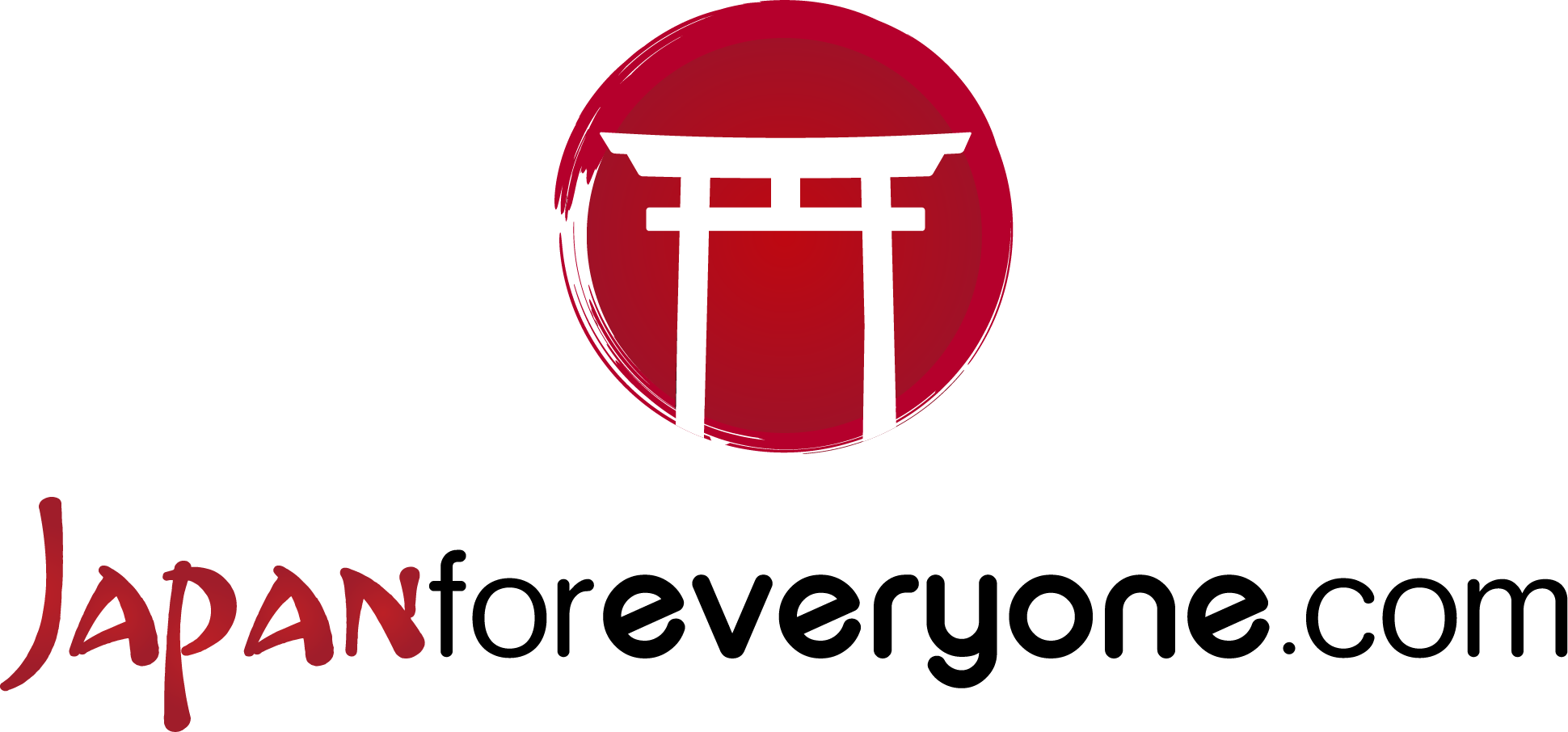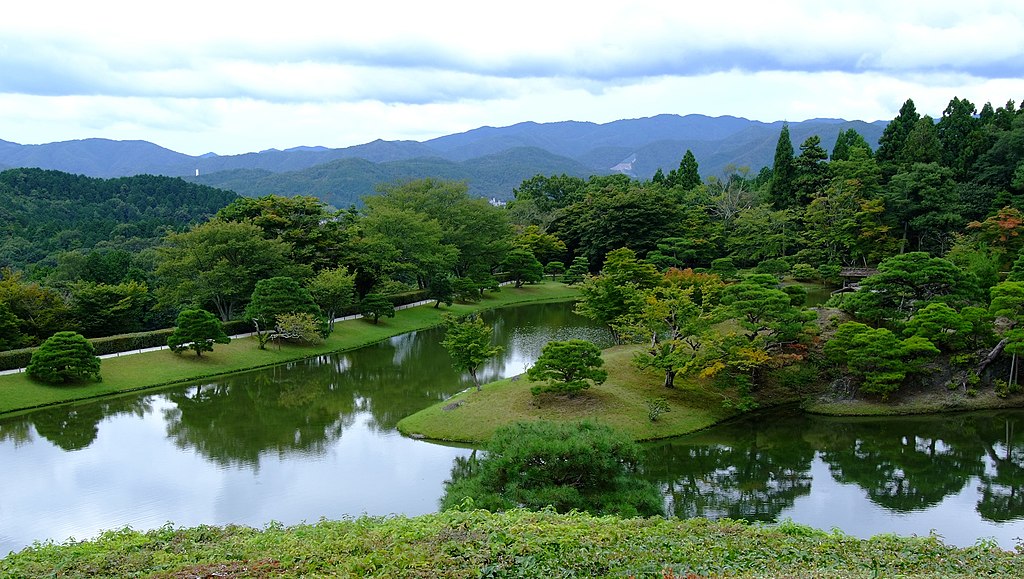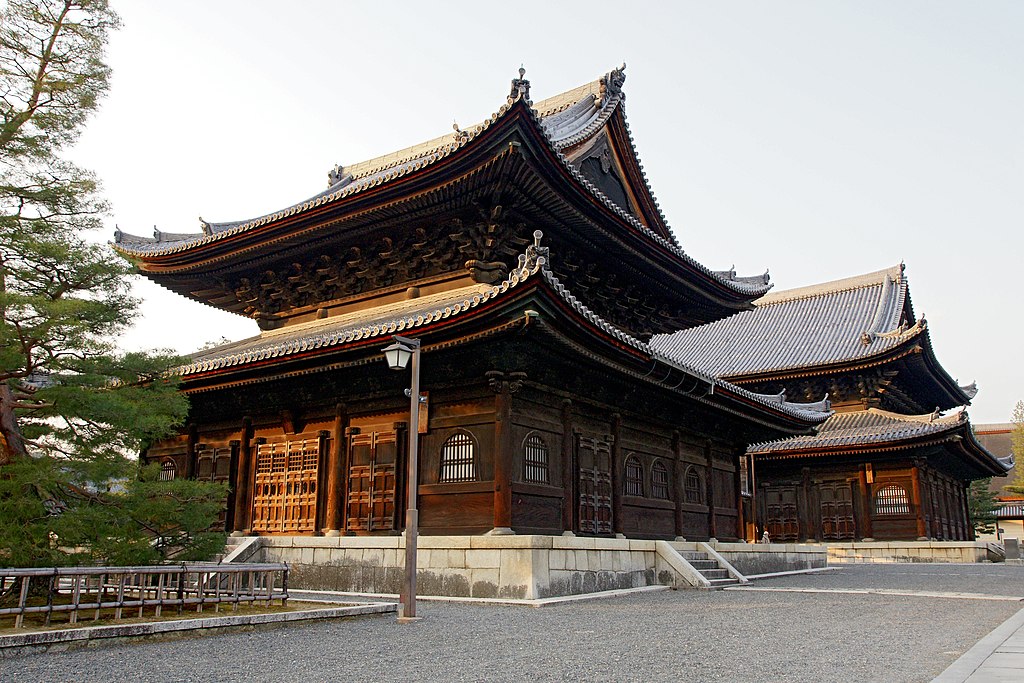What to do in northern Kyoto
The northern part of Kyoto is famous for Kinkakuji (the Golden Pavilion) and is the ideal place to admire the famous Zen gardens (rock gardens).
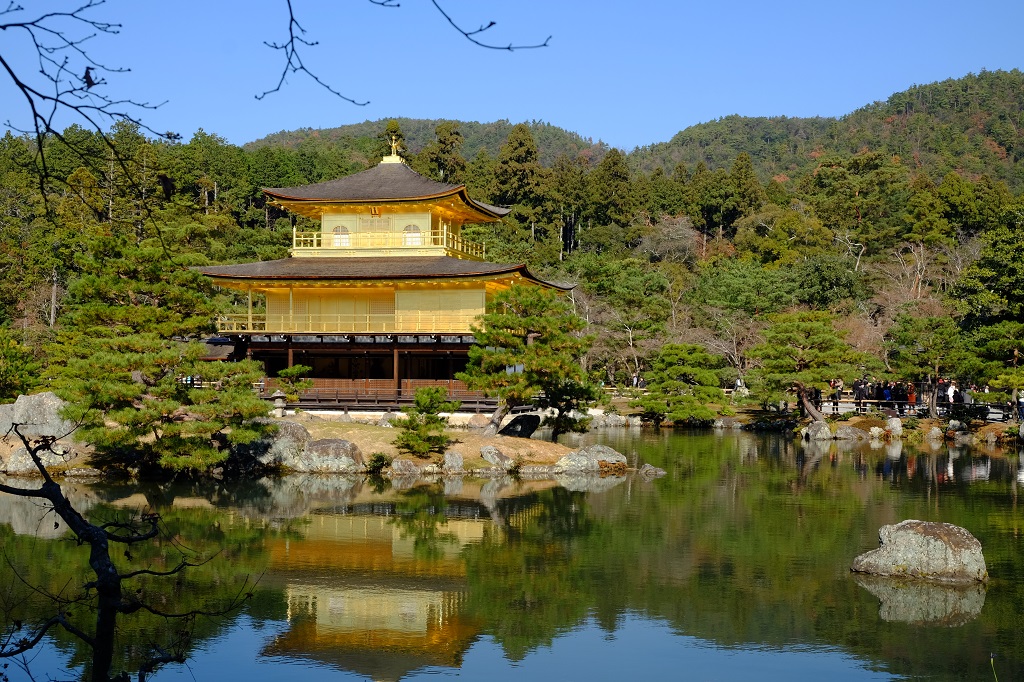
Photo by Japanforeveryone.com
Kinkakuji, also known as the Golden Pavilion, is one of Kyoto’s most famous and iconic sights. This magnificent and sacred building dating back to the 14th century is clad entirely in gold leaf, making it one of the most sumptuous buildings in the world. The Golden Pavilion is located in the middle of a beautiful Zen garden that includes ponds, small lakes and other ancient wooden structures arranged in a harmonious way. The temple is a favourite place for tourists visiting Kyoto, where they can immerse themselves in Japanese culture and enjoy this exclusive place steeped in sacredness.
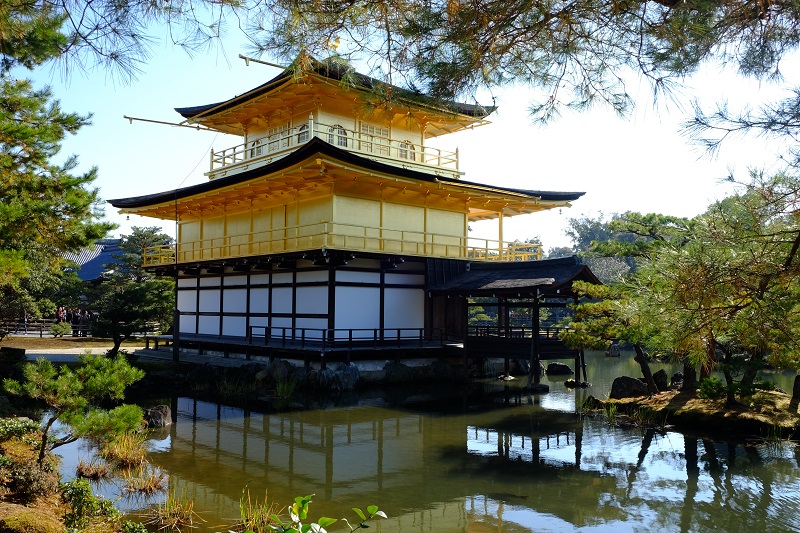
Photo by Japanforeveryone.com
Practical information
| Show location on Google Maps | |
| Official website |
|
| 9:00-17:00 | |
| No closing days | |
| 500 Yen | |
| 10 minutes’ walk from Kinkakuji-michi bus stop (routes 12, 59, 101, 102, 204, 205) 5 minutes’ walk from Kinkakuji-mae bus stop (routes 12, 59) |
The Shugakuin Imperial Mansion, also known as Shugakuin Rikyu, is one of the most beautiful and prestigious royal residences in Kyoto. Built in the 17th century, the villa is situated in the eastern hills of Kyoto and offers breathtaking views of the surrounding mountains. The villa’s outdoor garden is divided into three levels, each corresponding to a different natural landscape: the lotus pond, the pine forest and the rock garden. The Shugakuin Imperial Villa is a unique experience for those who want to immerse themselves in Japanese culture and admire its unparalleled beauty.
Wiiii, CC BY-SA 3.0, via Wikimedia Commons
Practical information
| Show location on Google Maps | |
| Official page |
|
| Tours take place at these times 9:00 – 10:00 – 11:00 – 13:30 – 15:00 (the tour is for a maximum of 50 people and lasts 80 minutes) | |
| No closing days | |
| Free tours to be booked in advance | |
| 15 minutes’ walk east of the Shugakuin train station on the Eizan Main Line |
The Ninnaji Temple is one of Kyoto’s spiritual gems. Founded in 888 AD, this ancient Buddhist structure has been recognised as a UNESCO World Heritage Site. The temple is famous for its traditional architecture, magnificent thatched roofs and beautiful gardens. Inside the complex are several historical buildings, such as the main hall, wooden pavilions and ornate bronze doors. Visitors can appreciate the spiritual atmosphere, stroll through the well-tended gardens and admire the ancient artwork on display. The Ninnaji Temple is a must-see for those wishing to immerse themselves in Kyoto’s history and culture.
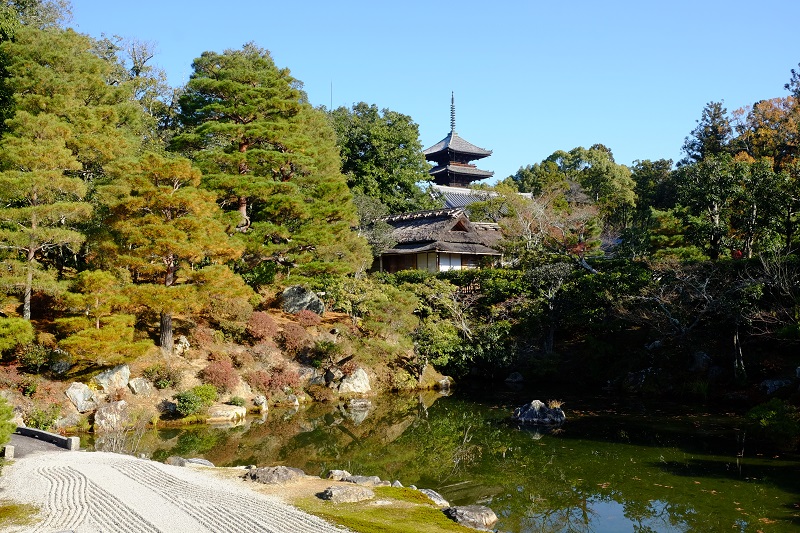
Photo by Japanforeveryone.com
Practical information
| Show location on Google Maps | |
| Official website |
|
| 9:00-17:00 (until 16:30 from December to February) Last admission 30 minutes before closing |
|
| No closing days | |
| 800 Yen (for the Goten) The rest is free, except during cherry blossom (500 Yen extra) |
|
| 2 minutes’ walk from Omuro Ninnaji bus stop (routes 10, 26, 59) |
The Ryoanji Temple is a place of peace and contemplation in the heart of Kyoto. Built in the 15th century, the temple is famous for its Zen stone garden, one of the most famous in the world. In this essential and minimalist garden, fifteen large stones are arranged on a bed of white gravel, yet their arrangement never reveals the entire composition. This mysterious garden invites reflection and meditation. The Ryoanji temple embodies the Japanese aesthetic of wabi-sabi, exalting beauty in simplicity and imperfection. A visit here is a transcendental experience not to be forgotten.
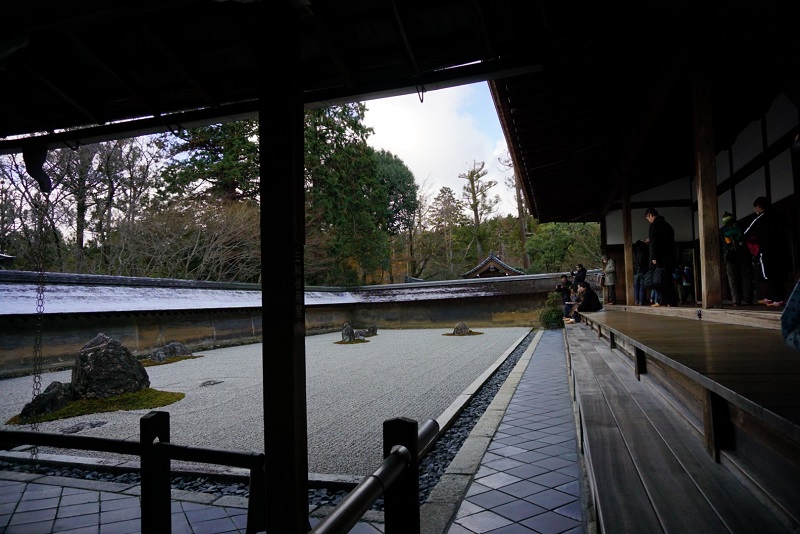
Photo by Luca Rodegher
Practical information
| Show location on Google Maps | |
| Official website |
|
| 8:00-17:00 (March to November) 8:30-16:30 (December to February) |
|
| No closing days | |
| 600 Yen (adults) 300 Yen (children under 15) |
|
| 5 minutes’ walk from Ryoanji-mae bus stop (line 59) JR bus from the station (covered by Japan Rail Pass) |
The Daitokuji Temple is a Buddhist complex located in the city of Kyoto, Japan. Founded in 1319, this ancient monastic residence is famous for its many subtemples and their tranquil beauty. Daitokuji offers visitors an immersive experience in Zen practice, with serene gardens, traditional wooden pavilions and meditation halls. One of the most famous sub-temples is the Daisen-in, with its striking gravel garden and symbolic elements. The Daitokuji temple is an ideal destination for those who wish to immerse themselves in Japanese spirituality and admire the ancient architecture and art of Zen monks.
663highland, CC BY-SA 3.0, via Wikimedia Commons
Practical information
| Show location on Google Maps | |
| Official website |
|
| Daisenin Garden | |
| 9:00-17:00 (until 16:30 from December to February) | |
| No closing days | |
| 400 Yen | |
| Ryogenin Garden | |
| 9:00-16:30 (last entry at 16:20) | |
| Some irregular closing days | |
| 350 Yen | |
| Kotoin Garden | |
| 9:00-16:00 (last entry at 15:30) | |
| Some irregular closing days | |
| 500 Yen | |
| Zuihoin Garden | |
| 9:00-17:00 | |
| No closing days | |
| 400 Yen | |
| 5 minutes’ walk from Daitokujimae bus stop (lines 12, 101, 102, 204, 205, 206) 15 minutes’ walk west of Kitaoji underground station (K04) |
The Kitano Tenmangu Shrine is an important Shinto place of worship in the city of Kyoto, Japan. Founded in 947, the shrine is dedicated to the illustrious scholar Sugawara no Michizane, worshipped as the god of poetry, literature and learning. The shrine is famous for its monthly market, where vendors sell antiques, ceramics, toys and souvenirs. Kitano Tenmangu also boasts traditional architecture, a magnificent garden and a statue of a sacred bull. The shrine attracts visitors from all over the world who want to explore the history and culture of the Japanese Shinto religion.
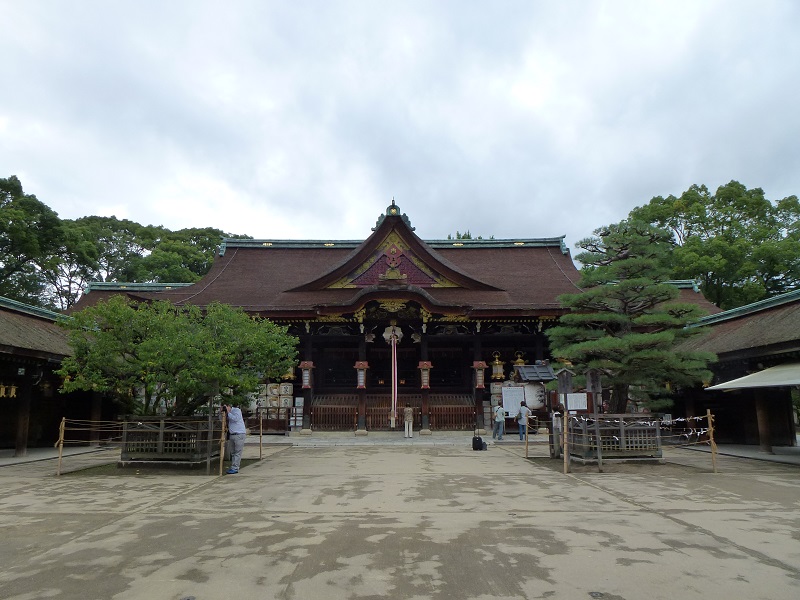
Photo by Japanforeveryone.com
Practical information
| Show location on Google Maps | |
| Official website |
|
| Kitano Tenmangu Shrine | |
| 5:00-18:00 (April to September) 5:30-17:30 (October to March) |
|
| No closing days | |
| Free | |
| Marketplace | |
| The 25th of each month 6:00-21:00 | |
| Plum and maple garden | |
| 10:00-16:00 from the beginning of February to mid-March (plum trees) and from the beginning of November to mid-December (maple trees) Weekend evening openings until 8 p.m. during the peak of the autumn season |
|
| 1000 Yen | |
| 5 minutes’ walk from the Kitano Tenmangumae bus stop (routes 10, 50, 101, 102, 203) |
The Kamigamo and Shimogamo shrines, known collectively as the Kamo shrines, are two important Shinto shrines in Kyoto, Japan. These shrines, dating back to the 8th century, are surrounded by the beauty of nature, with lush forests and serpentine rivers. They are particularly visited during the Aoi Matsuri festival, one of the oldest and largest festivals in Kyoto. Kamo shrines offer visitors a spiritual experience in contact with ancient traditions, with sacred paintings, beautiful wooden towers and sacred rituals. A visit to these shrines is a journey into the past and Japanese spirituality.
Mikel Lizarralde, CC BY-SA 2.0, via Wikimedia Commons
Practical information
| Official website |
|
| Shimogamo Shrine | |
| Show location on Google Maps | |
| 5:30-18:00 (summer) 6:30-17:00 (winter) |
|
| No closing days | |
| Free | |
| Shimogamojinja-mae bus stop (lines 4, 205) 15 minutes’ walk north from Demachi-Yanagi station on the Keihan Line |
|
| Kamigamo Shrine | |
| Show location on Google Maps | |
| 5:30-17:00 | |
| No closing days | |
| Free | |
| Kamigamojinja-mae bus stop (routes 4, 46) |
The Myoshinji Temple is one of the largest Buddhist complexes in Kyoto, Japan. Founded in the 14th century, the temple covers a vast area and includes numerous sub-temples, pavilions and gardens, famous for their natural beauty and serene atmosphere. Myoshinji also houses the tomb of the famous Buddhist theologian Shinran Shonin and a collection of valuable cultural treasures. The temple is a place of meditation and reflection, where visitors can experience Japanese spirituality and aesthetics. A visit to Myoshinji is a must for fans of Buddhism and Japanese history.
663highland, CC BY-SA 3.0, via Wikimedia Commons
Practical information
| Show location on Google Maps | |
| Official website |
|
| Guided tours | |
| Every 20 minutes from 9:10 to 11:40 and from 13:00 to 16:40 (until 15:40 from November to February) One tour at 12:30 |
|
| No closing days | |
| 700 Yen | |
| Taizoin Temple | |
| 9:00-17:00 | |
| No closing days | |
| 600 Yen | |
| Keishunin Temple | |
| 9:00-17:00 (until 16:30 from November to February) | |
| Some irregular closing days | |
| 400 Yen | |
| Daishinin Temple | |
| 9:00-17:00 | |
| Some irregular closing days | |
| 300 Yen | |
| 5 minutes’ walk north from JR Hanazono Station or south from Myoshinji Station of the Keifuku Kitano Line Myoshinjimae bus stop (lines 91 and 93) |
TOEI Uzumasa Eigamura, also known as ‘Kyoto Studio Park’, is a film theme park located in the city of Kyoto, Japan. This park offers visitors the opportunity to immerse themselves in Japanese film culture, with sets and reconstructions of old film and television sets. Visitors can also try on typical costumes from the Edo period, take part in shows and see live scenes from films and television programmes in production. With its fun and authentic atmosphere, the TOEI Uzumasa Eigamura is a unique experience for fans of Japanese cinema and culture.
Photo by 663highland, CC BY-SA 4.0, via Wikimedia Commons
Practical information
| Show location on Google Maps | |
| Official website |
|
| 9:00-17:00 (March to July and September to November) 9:00-19:00 (Saturdays, Sundays and public holidays from March to September and all of August) 9:30-16:30 (December to February) 9:30-17:00 (Saturdays, Sundays and public holidays from December to February) Last admission one hour before closing |
|
| Some days for maintenance (see calendar on official website) | |
| 2400 Yen (some attractions require a separate ticket) | |
| 5 minutes’ walk from Uzumasa station on the Keifuku Arashiyama line 15 minutes’ walk from JR Hanazono Station Uzumasa Eigamuramae bus stop (lines 91 and 93) |
Enkoji Temple is an ancient Buddhist complex located on Higashiyama Hill in Kyoto, Japan. Founded in the 14th century, the temple structure is composed of numerous buildings, pavilions and gardens, famous for their beauty and serenity. In addition, the temple houses various works of art such as paintings, calligraphy and Buddha statues. Among the highlights of the Enkoji temple are the autumn leaf and maple leaf garden, which becomes a spectacular explosion of colours in the autumn months. The Enkoji temple is an ideal place for meditation and contemplation in the tranquillity of nature.
Practical information
| Show location on Google Maps | |
| Official website |
|
| 9:00-17:00 (last entry 30 minutes before closing time) | |
| No closing days | |
| 500 Yen | |
| 10 minutes’ walk from Ichijoji Sagarimatsucho bus stop (line 5) 10 minutes’ walk from Eizan Railways Shugakuin Station |
